SBOS681C July 2014 – November 2017 OPT3001
PRODUCTION DATA.
- 1 Features
- 2 Applications
- 3 Description
- 4 Revision History
- 5 Pin Configuration and Functions
- 6 Specifications
-
7 Detailed Description
- 7.1 Overview
- 7.2 Functional Block Diagram
- 7.3 Feature Description
- 7.4 Device Functional Modes
- 7.5 Programming
- 7.6
Register Maps
- 7.6.1
Internal Registers
- 7.6.1.1
Register Descriptions
- 7.6.1.1.1 Result Register (offset = 00h)
- 7.6.1.1.2 Configuration Register (offset = 01h) [reset = C810h]
- 7.6.1.1.3 Low-Limit Register (offset = 02h) [reset = C0000h]
- 7.6.1.1.4 High-Limit Register (offset = 03h) [reset = BFFFh]
- 7.6.1.1.5 Manufacturer ID Register (offset = 7Eh) [reset = 5449h]
- 7.6.1.1.6 Device ID Register (offset = 7Fh) [reset = 3001h]
- 7.6.1.1
Register Descriptions
- 7.6.1
Internal Registers
- 8 Application and Implementation
- 9 Power-Supply Recommendations
- 10Layout
- 11Device and Documentation Support
- 12Mechanical, Packaging, and Orderable Information
6.7 Typical Characteristics
At TA = 25°C, VDD = 3.3 V, 800-ms conversion time (CT = 1), automatic full-scale range (RN[3:0] = 1100b), white LED, and normal-angle incidence of light, unless otherwise specified.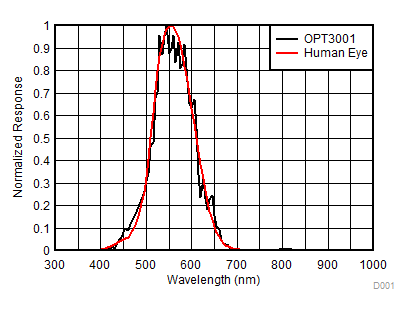
Figure 2. Spectral Response vs Wavelength
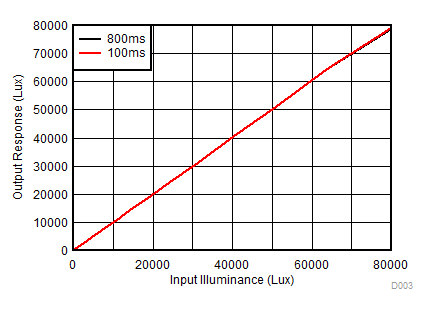
Figure 4. Output Response vs Input Illuminance
(Entire Range = 0 lux to 83k lux)
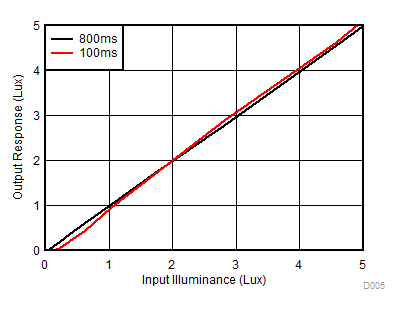
Figure 6. Output Response vs Input Illuminance
(Low Range = 0 lux to 5 lux)
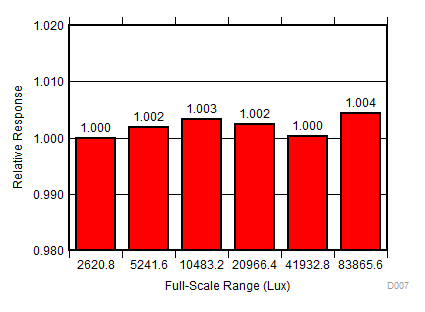
| Input illuminance = 2490 lux, normalized to response of 2560 lux full-scale |
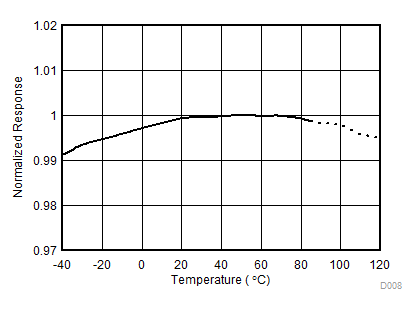
Figure 10. Normalized Response vs Temperature
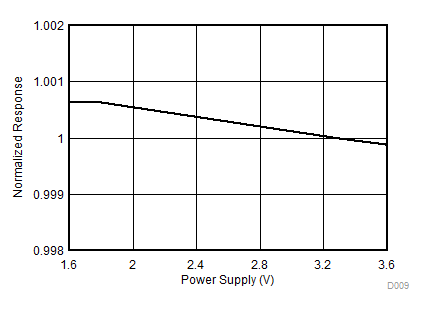
Figure 12. Normalized Response vs Power-Supply Voltage

| M[1:0] = 10b |
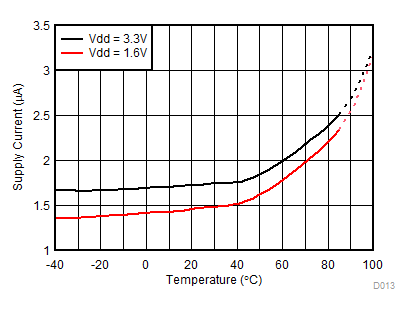
| M[1:0] = 10b |
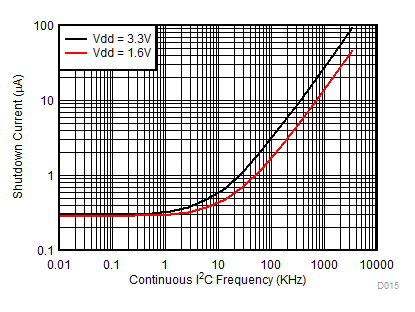
| Input illuminance = 80 lux, SCL = SDA, continuously toggled at I2C frequency Note: A typical application runs at a lower duty cycle and thus consumes a lower current. |
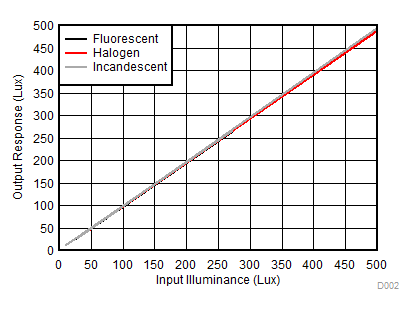
Figure 3. Output Response vs Input Illuminance, Multiple Light Sources (Fluorescent, Halogen, Incandescent)
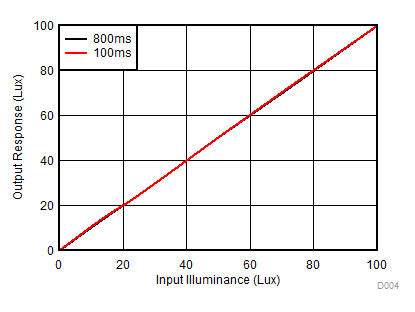
Figure 5. Output Response vs Input Illuminance
(Mid Range = 0 lux to 100 lux)
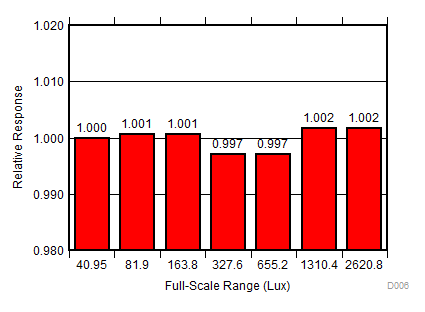
| Input illuminance = 33 lux, normalized to response of 40.95 lux full-scale |
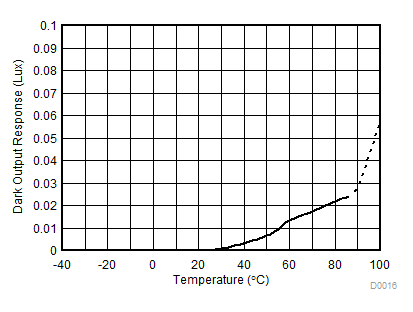
| Average of 30 devices | ||
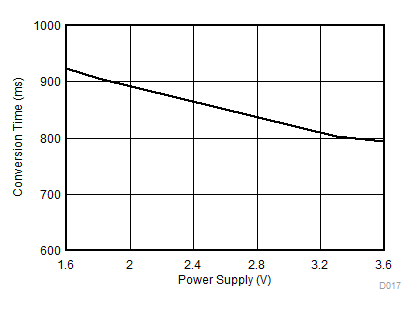
Figure 11. Conversion Time vs Power Supply
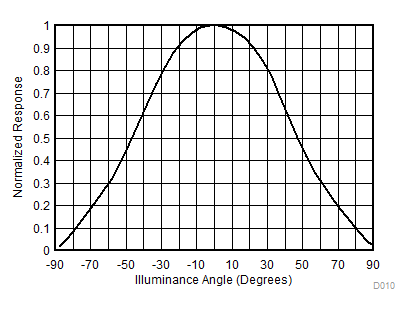
Figure 13. Normalized Response vs Illuminance Angle
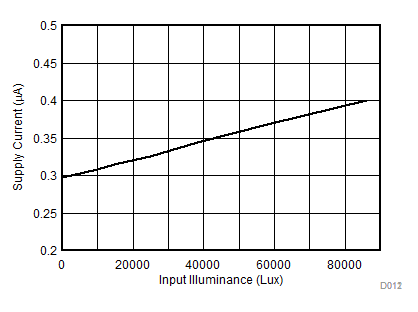
| M[1:0] = 00b |
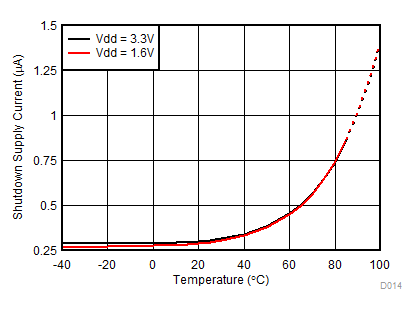
| M[1:0] = 00b, input illuminance = 0 lux |